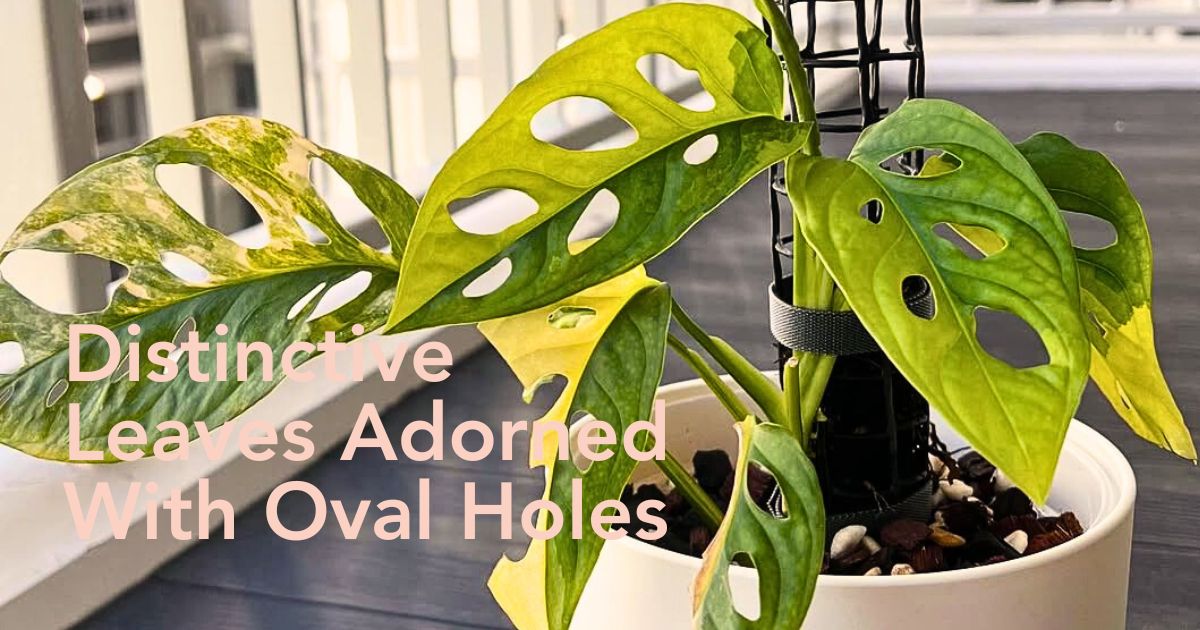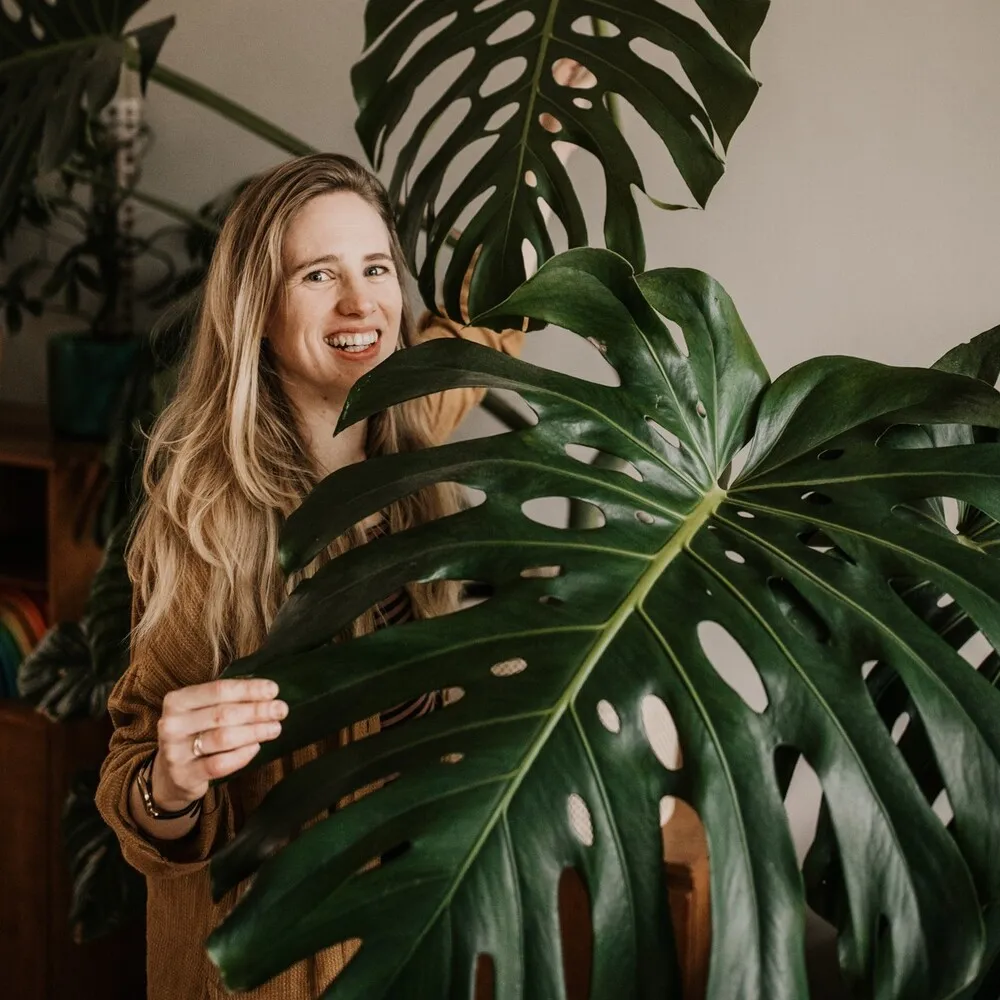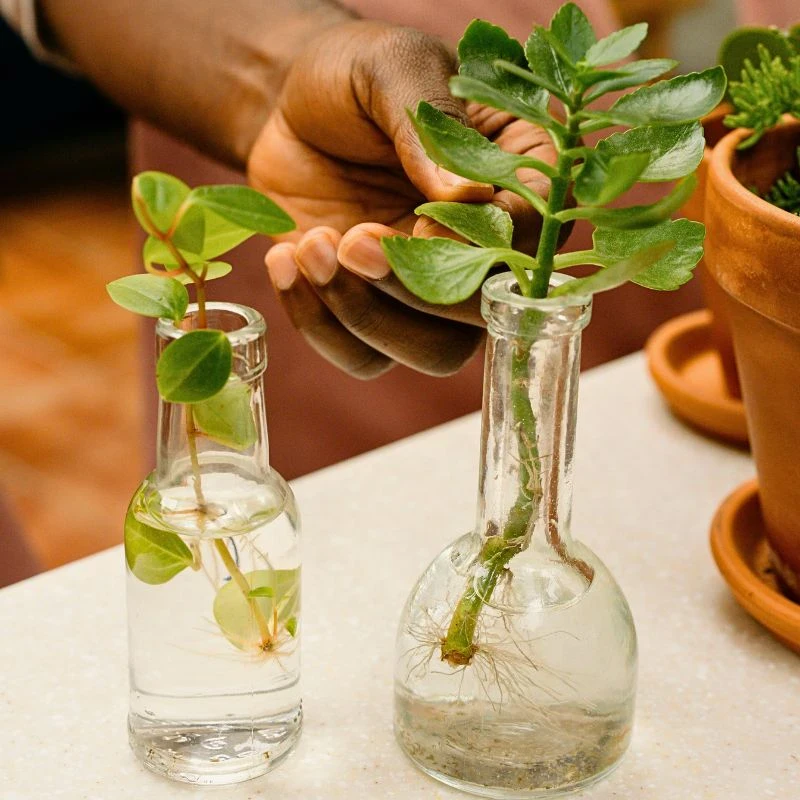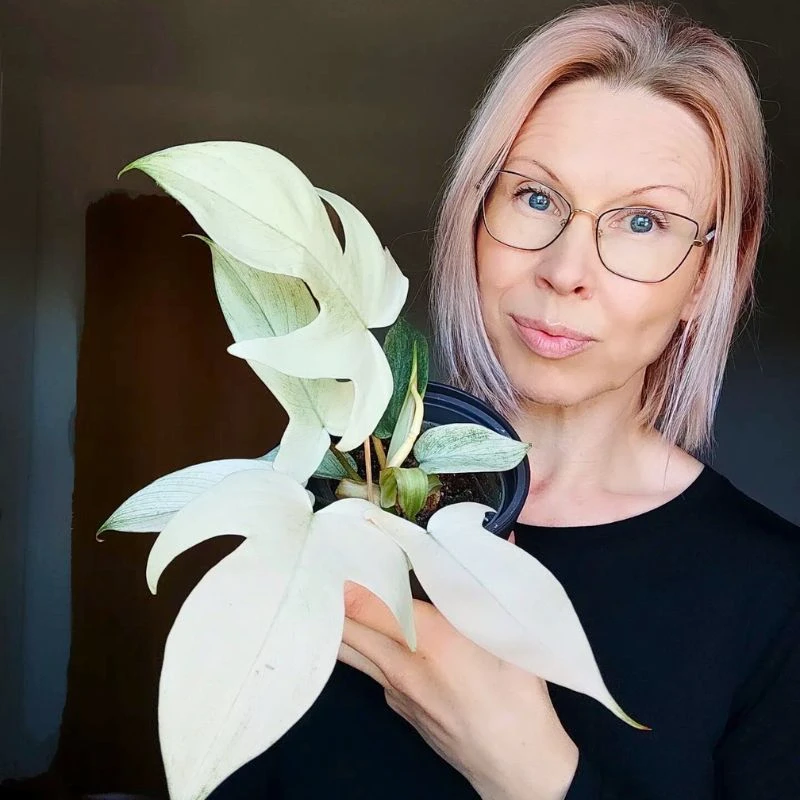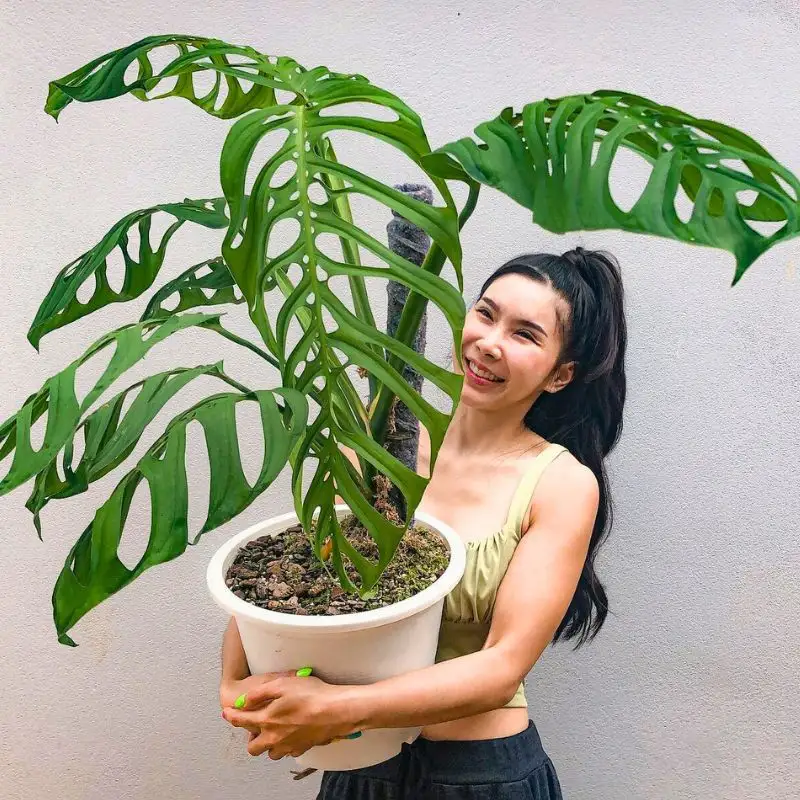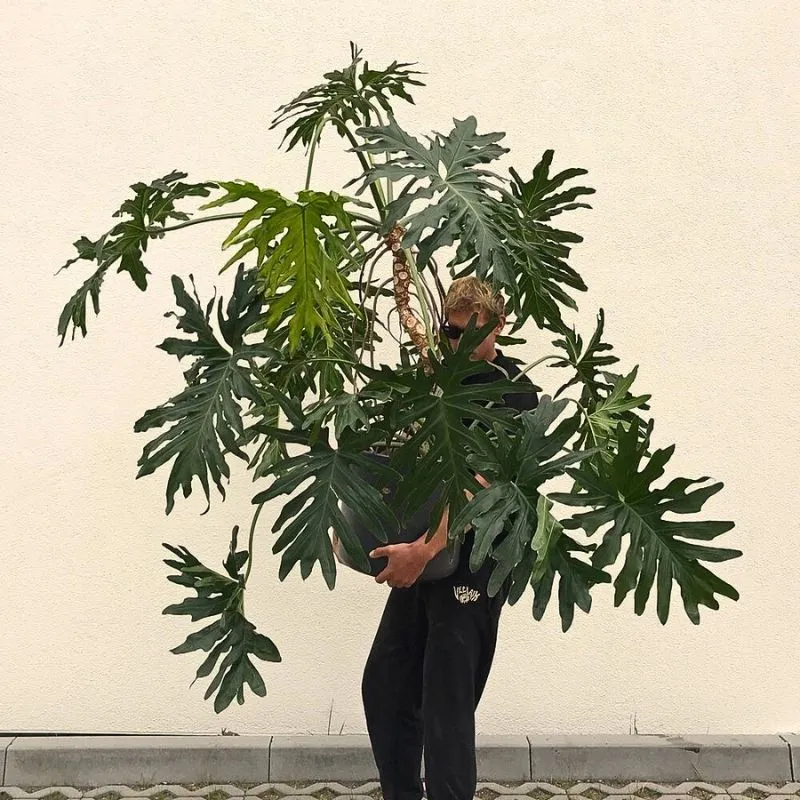A houseplant with whimsically perforated leaves and trailing vines, the Monstera adansonii or Adanson’s Monstera plant is a tropical beauty often considered a modern indoor gardening staple. This is mainly due to its striking fenestrated foliage and perfect adaptability. Often known by the nickname Swiss Cheese plant or vine, this tropical ornamental evergreen is known for its eye-catching leaves and a love of climbing; qualities which evoke a sense of a jungle-like aesthetic, and an exotic elegance.
Simply stated, Monstera adansonii’s popularity is no fleeting trend—its versatility, striking appearance, and rich symbolism make it a beloved fixture in homes, offices, and urban indoor jungles. And, as one of the most exciting Monstera plants around, the adansonii Monstera offers not just aesthetic appeal but also carries significance—especially when it comes to the unique appeal of its variegated forms, like the Monstera adansonii Albo and Monstera adansonii Aurea in contemporary plant culture—and practical benefits.
The Botanical Profile of Monstera Adansonii
Monstera adansonii belongs to the Araceae family and is classified as a hemiepiphyte, meaning it grows both as a terrestrial plant and an epiphyte, climbing trees using aerial roots. It shares a kinship with other tropical favorites like philodendrons and the larger Monstera deliciosa.
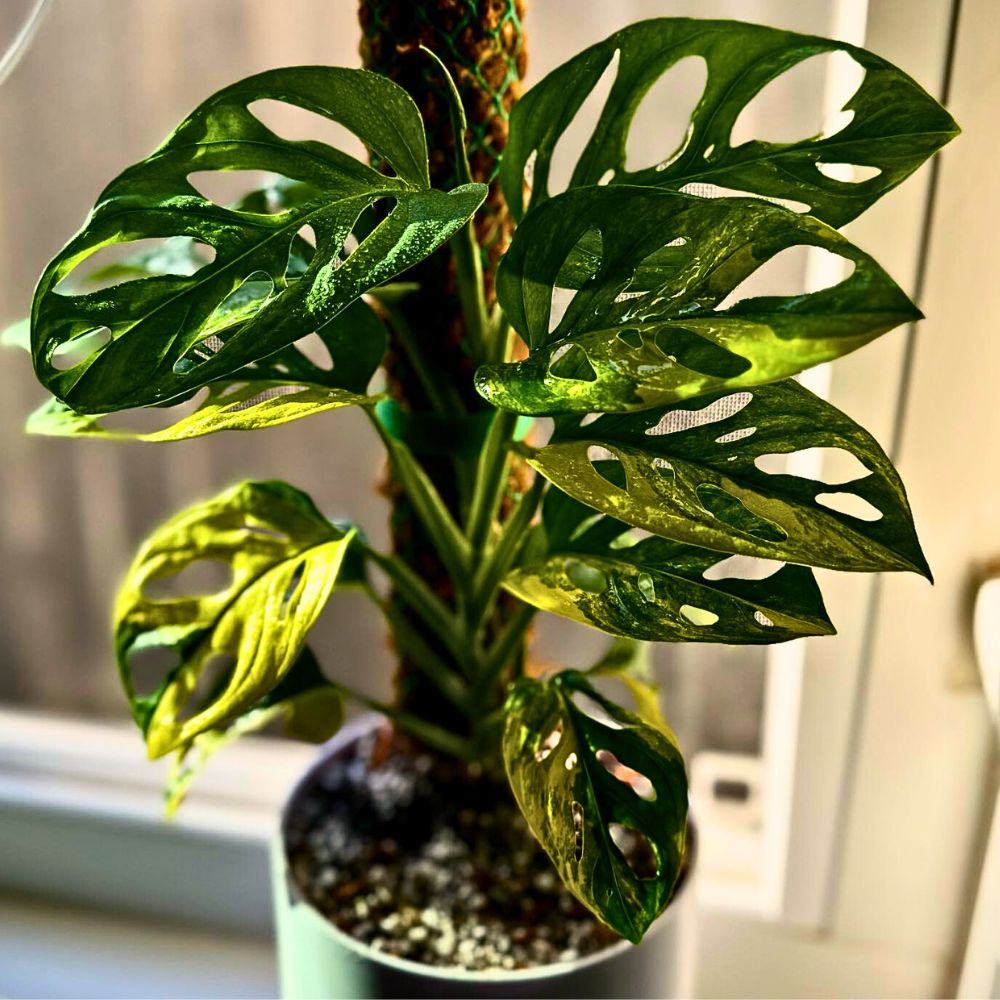
Native to the rainforests of Central and South America, this evergreen climber is instantly recognizable by its oval, heart-shaped leaves which measure up to 55 cm in length in the wild and are punctuated with irregular fenestrations—nature’s artistry gives the foliage its ‘Swiss cheese’ appearance. These holes, scientifically termed leaf fenestration, serve a purpose in the wild where they allow sunlight to filter through to lower leaves and reduce wind resistance during storms.
Unlike its close relative Monstera deliciosa which develops broad, split leaves, the adansonii Monstera species remains compact indoors, typically reaching 3–5 feet in height. It boasts a more delicate, trailing habit, with its vines extending over 13 feet when supported. Its stems produce aerial roots that cling to trees in its natural habitat, a behavior that makes it equally suited to climbing moss poles or cascading from hanging planters indoors.
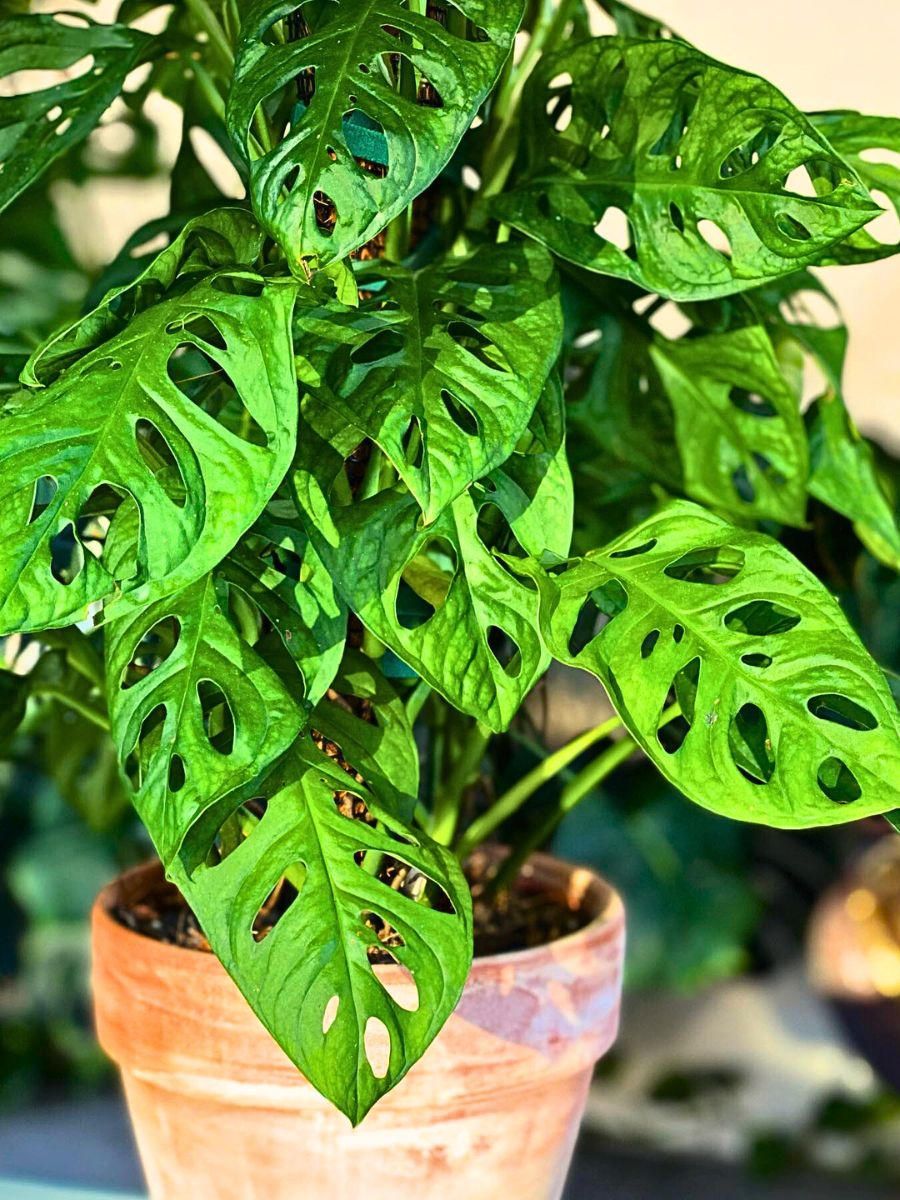
Several subspecies of this variety are available including Monstera adansonii Variegata, Monstera adansonii Friedrichsthalii, Monstera adansonii subsp. blanchetii, Monstera adansonii var. klotzschiana, and Monstera adansonii Laniata. Each varies slightly in leaf texture, fenestration patterns, and oftentimes the variegation. Monstera adansonii Laniata, for instance, features matte undersides and symmetrical perforations along the midrib, contrasting with the glossy leaves and random holes of the standard adansonii.
For indoor and interior plant collectors, the allure of rare cultivars like the Monstera adansonii Albo and Monstera adansonii Aurea is irresistible. The ghostly Albo variety is spectacular due to its marbled white variegation, while the Aurea variety glows with golden-yellow streaks. These mutations occur unpredictably in nature, making them rare and highly prized. However, their care demands extra attention, as variegated sections lack chlorophyll.
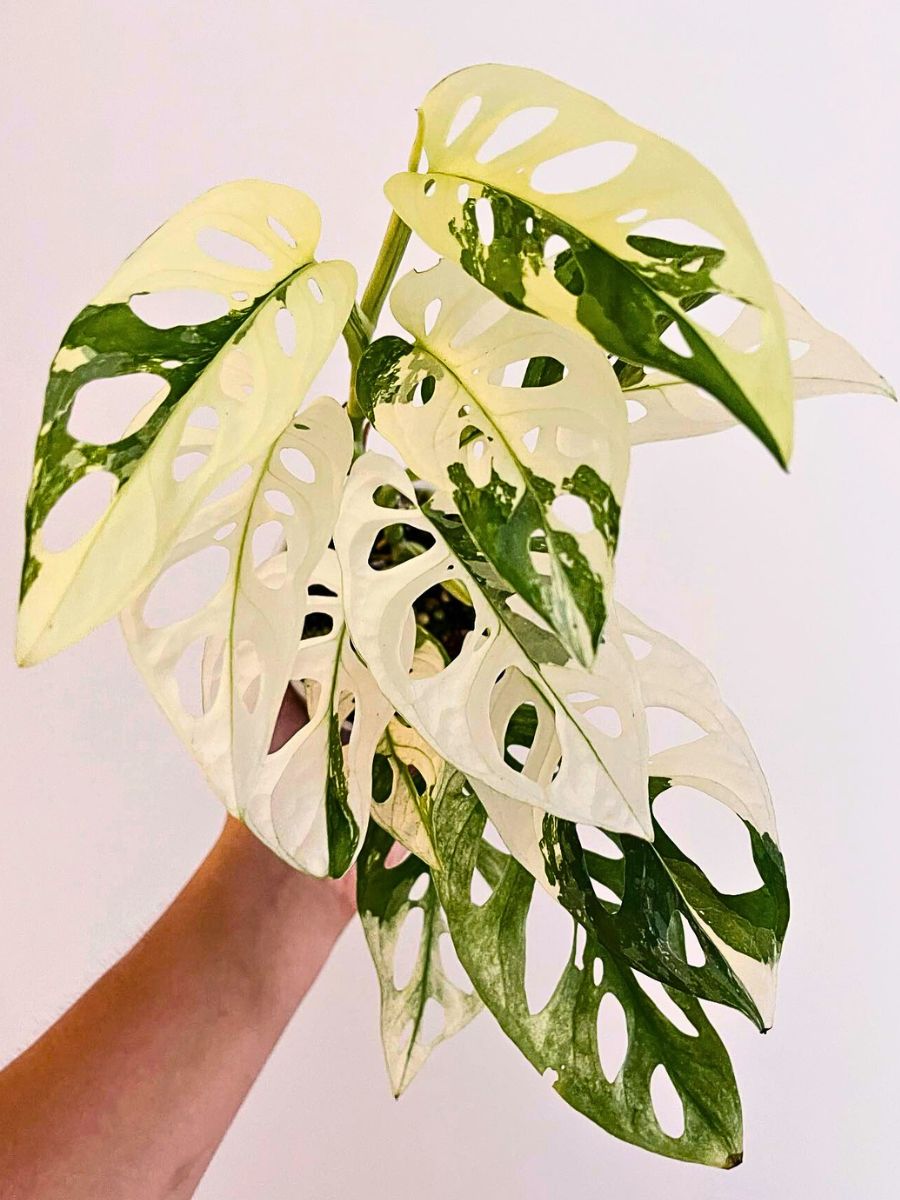
The Allure of Monstera Adansonii Variegated Rarities
The Monstera adansonii Albo and Aurea are among the crown jewels of the Monstera plant’s variegated collection. Monstera adansonii Albo Variegata, for instance, is a rare cultivar that features striking white variegation caused by a genetic mutation that inhibits chlorophyll production in certain leaf sectors. The Albo’s white variegation ranges from delicate speckles to bold marbling, with each leaf standing out uniquely. Its variegation is, however, unstable, requiring bright light to maintain the contrast. Unlike the standard Monstera adansonii, its leaves often exhibit a matte texture and symmetrical perforations. However, its beauty comes with challenges: variegated sections photosynthesize less efficiently, and the plant generally has slower growth. Even so, due to this and the high demand, its cuttings command premium prices in collector markets.
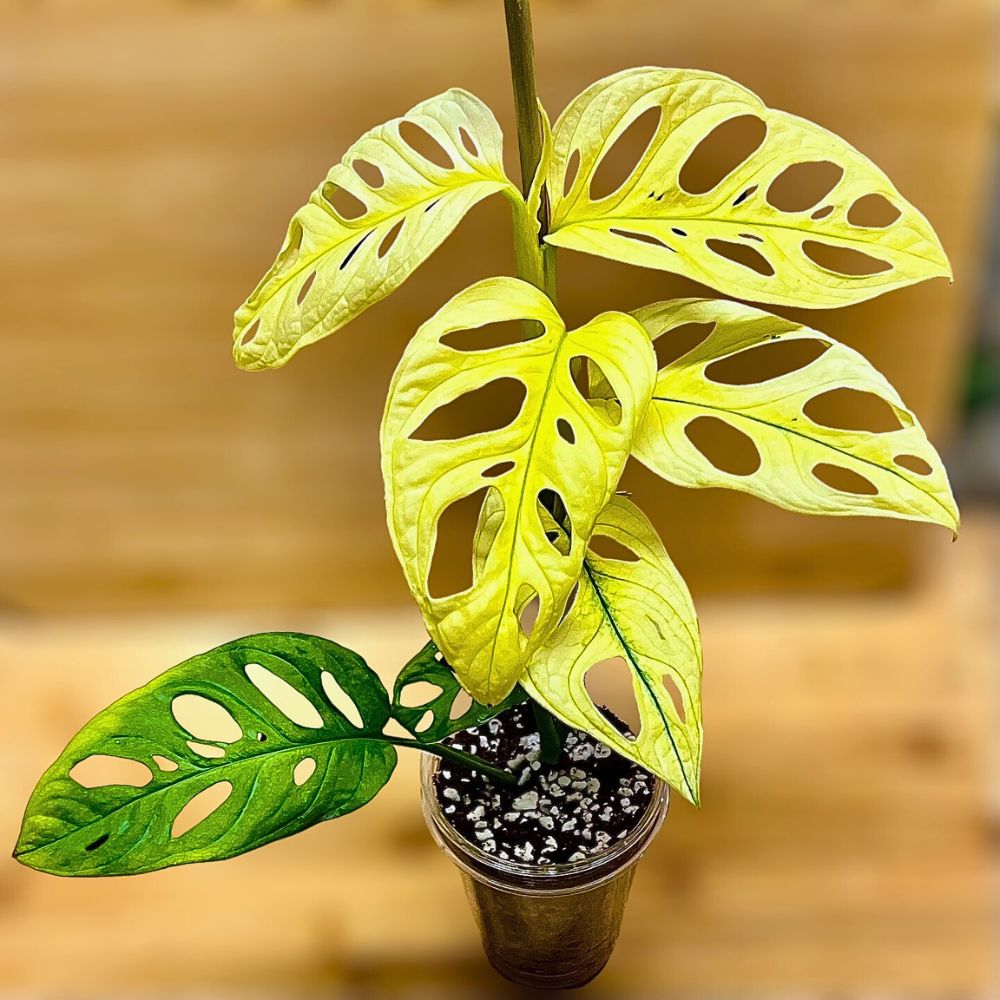
The variegated Monstera adansonii Aurea is, on the other hand, characterized by golden-yellow variegation. It is even rarer than the Albo variety. This variety’s chlorophyll deficiency gives it an ethereal glow but also makes it more susceptible to burning in direct light. While its care requirements mirror those of other variegated Monstera varieties, it may require more light to preserve its vibrant hues. Both varieties are, nonetheless, sensitive to overwatering and benefit from well-draining substrates. Plus, patience is key. Monstera adansonii Aurea plants, in particular, grow slower than their green counterparts.
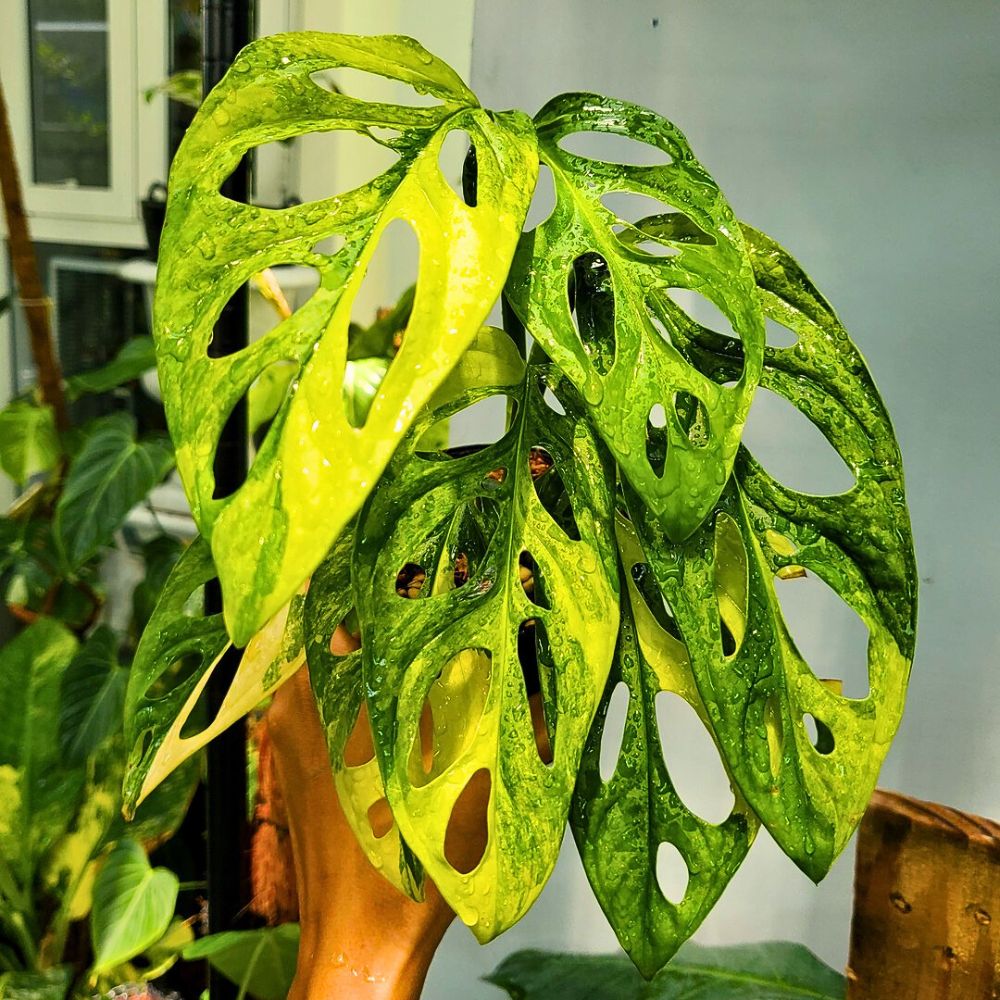
Native Habitat of the Monstera Adansonii Also Called Swiss Cheese Plant
Monstera adansonii thrives in the humid understories of tropical forests across Peru, Ecuador, Mexico, Brazil, and parts of the Caribbean, and Central America. These regions provide the warm, stable temperatures of 18°C–24°C and high humidity of 50–80% that the plant requires. In its natural habitat, this plant which thrives in the moist, dappled sunlit tropical rainforests, climbs tree trunks using aerial roots (to access sunlight). While it grows as a hemiepiphyte—a plant that begins life rooted in the forest floor before climbing trees to reach brighter light—in the jungles, this behavior can be replicated indoors with moss poles or trellises.
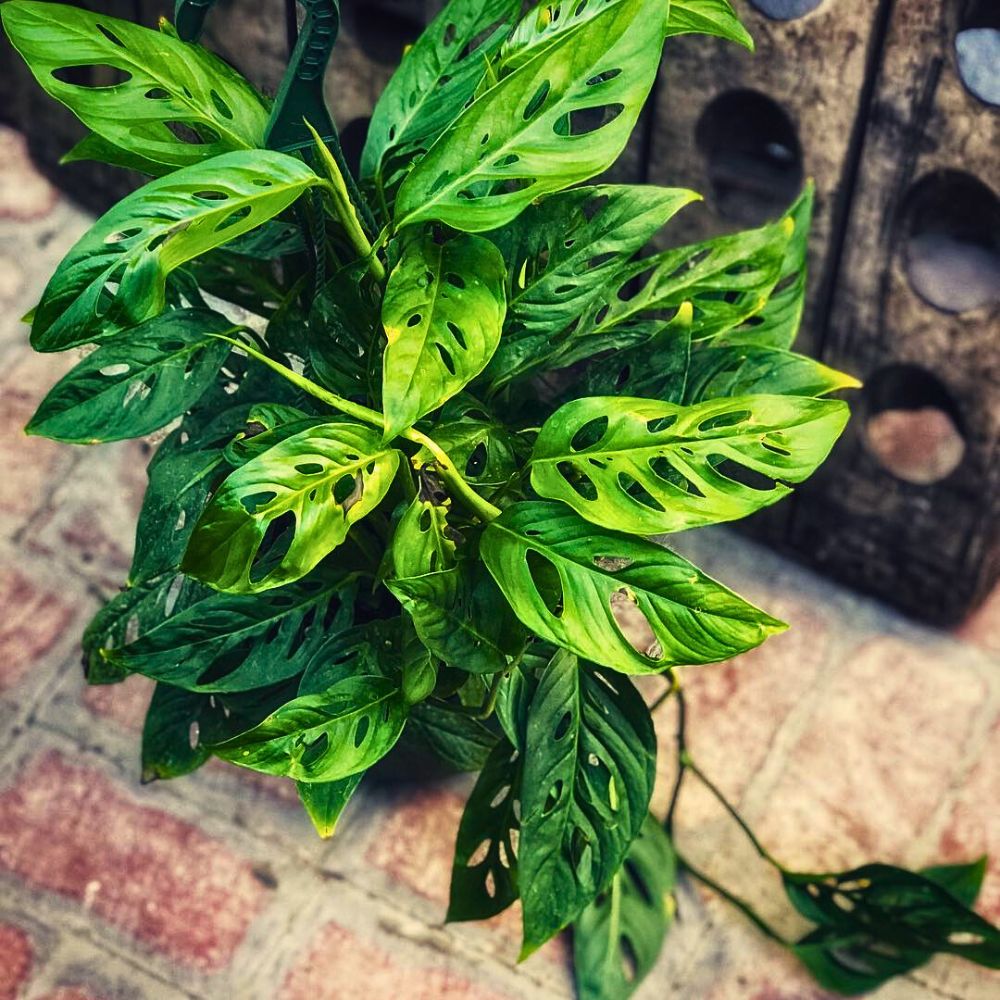
Also, in its native rainforest habitat, the adansonii Montsera’s aerial roots anchor it to trunks, absorbing moisture and nutrients from the air and decaying organic matter. Moreover, in these environments, the adansonii Monstera has evolved to endure fluctuating conditions, from heavy rains to dry spells; a resilience that translates well to indoor cultivation, where it tolerates occasional neglect better than many tropical plants.
Reproducing its required native conditions including the right humidity is key to taking advantage of its full potential. What is more, the plant’s ability to adapt to varying light levels—from bright, filtered canopies to shaded forest floors—explains its resilience as a houseplant. Though, insufficient light may reduce its fenestration, emphasizing the importance of painstakingly mimicking its native conditions.
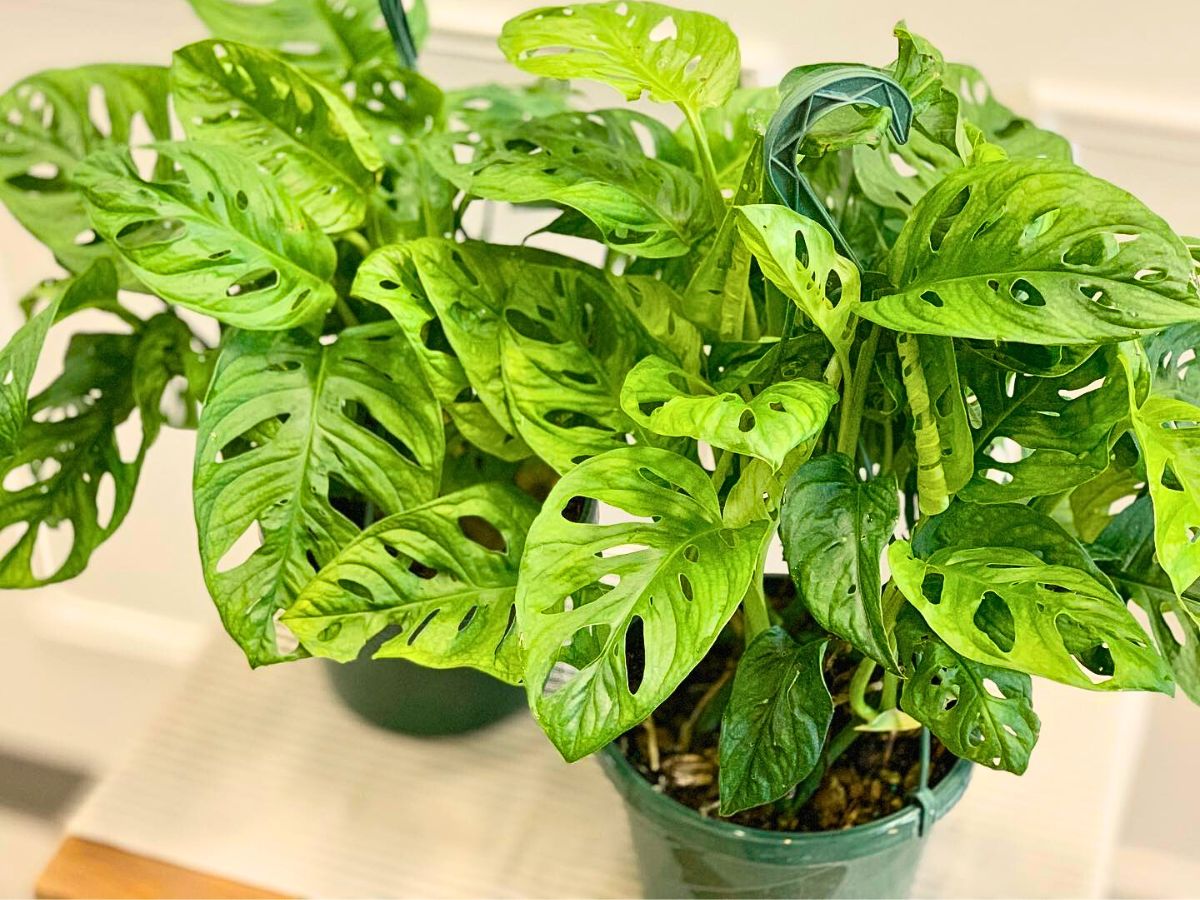
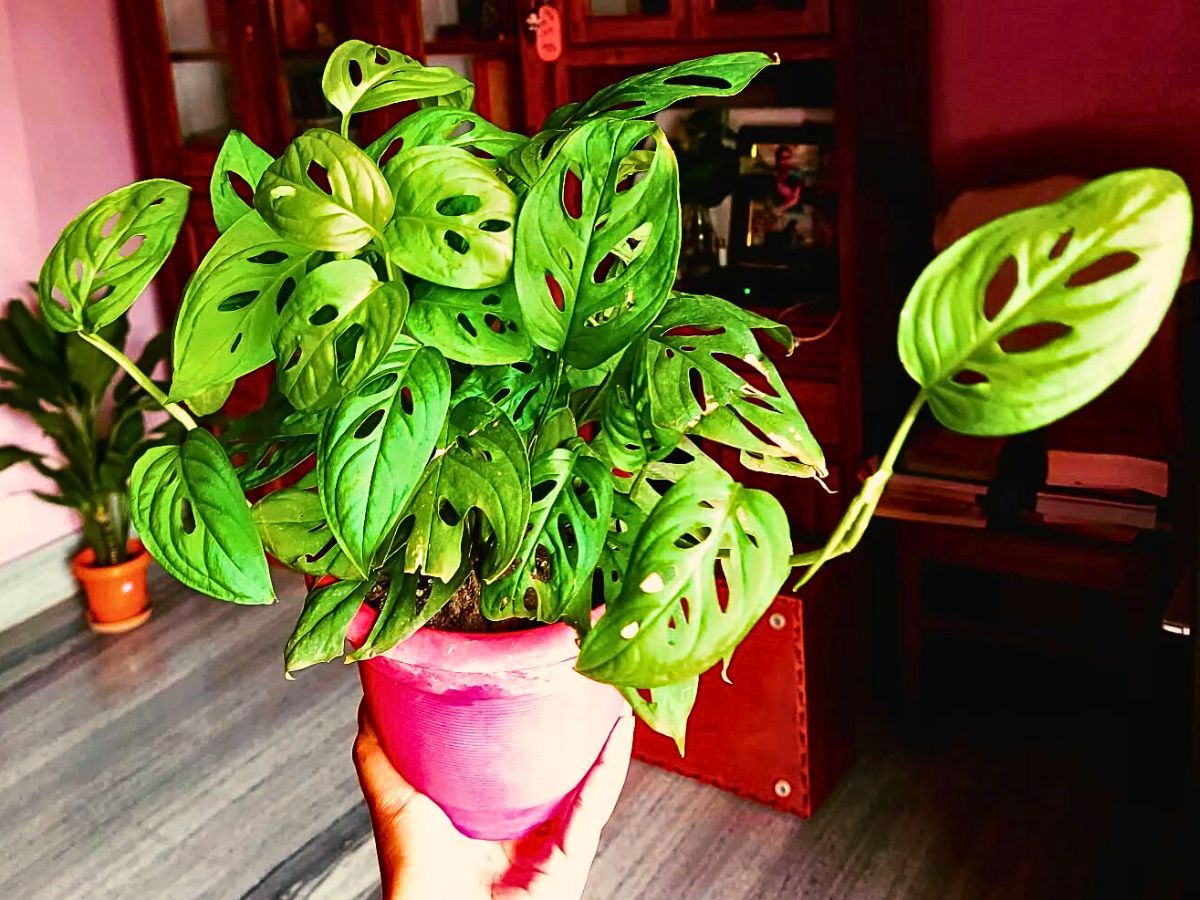
Why Monstera Adansonii Is More Than Just a Pretty Leaf
Monstera adansonii may lack deep historical symbolism, but its modern popularity stems from its association with tropical aesthetics, rarity, and wellness trends. Its fenestrated leaves may be interpreted as symbols of transparency and growth, or the ability to see through illusions and embrace truth and clarity. This resonates with urban dwellers seeking a connection to nature. Generally, however, in interior design, this plant is all about vitality.
Thus, it is frequently used in biophilic design—a movement that seeks to connect humans with nature through nature-infused architecture and decor—to enhance both the spaces and mental well-being. Still, in modern interior design, the plant’s lush foliage softens stark spaces, while its trailing vines introduce dynamic movement. One could, therefore, drape it across a bookshelf, train it up a trellis, or display it in a minimalist pot, where the Monstera adansonii easily bridges the gap between wild and curated aesthetics.
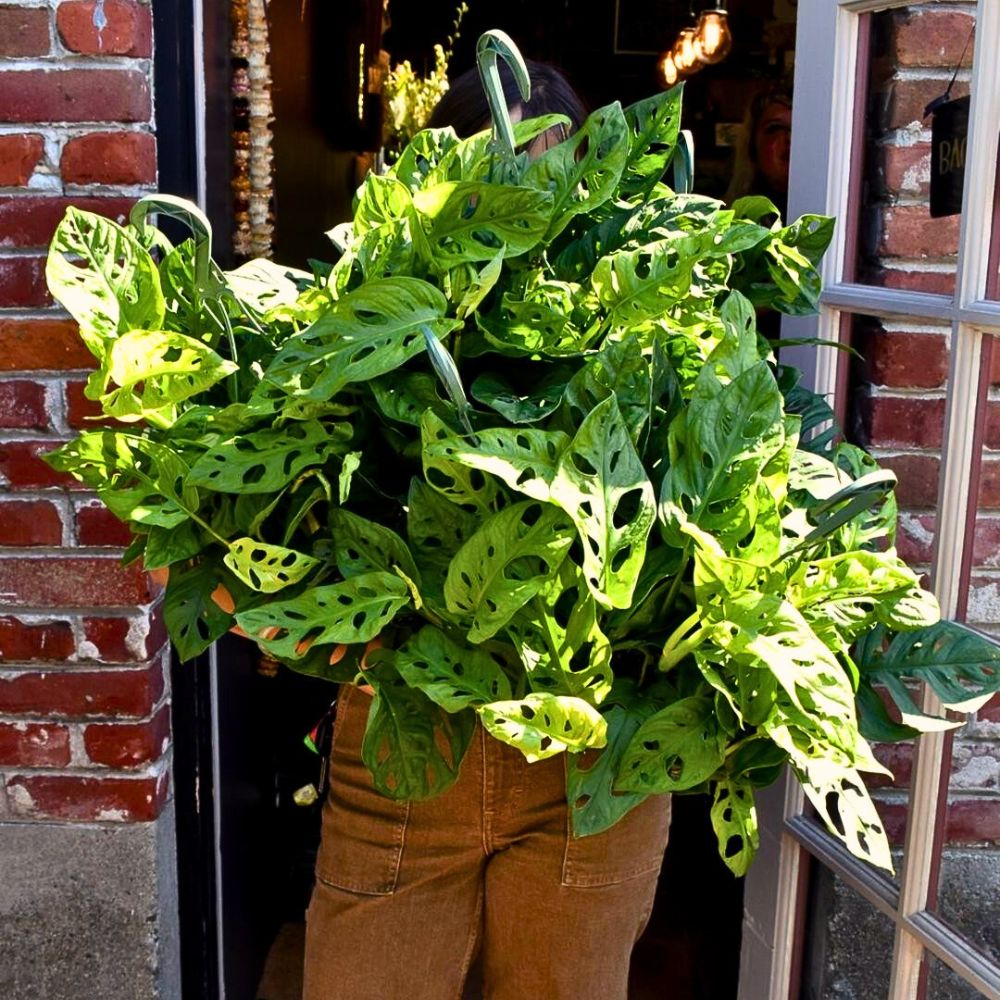
Even more is that the plant’s variegated cultivars like the Monstera adansonii Albo and Aurea have, also, gained cult status among collectors. They represent exclusivity, rarity, and nature’s floral artistry. Their marbled white or golden patterns are seen as living art, often displayed as rare and statement plant pieces in homes, offices, and other indoor spaces.
Propagating Monstera Adansonii
One of the delights of growing Monstera adansonii is how easily it propagates. The most common method to propagate them is through stem cuttings. To do this, select a healthy stem with at least one node (the bump where leaves and roots emerge) and a leaf. Place the cutting in water or moist soil, ensuring the node is submerged or buried. Roots typically develop within 2–4 weeks. And, once the roots are 2–3 inches long, you can transplant the cutting into soil.
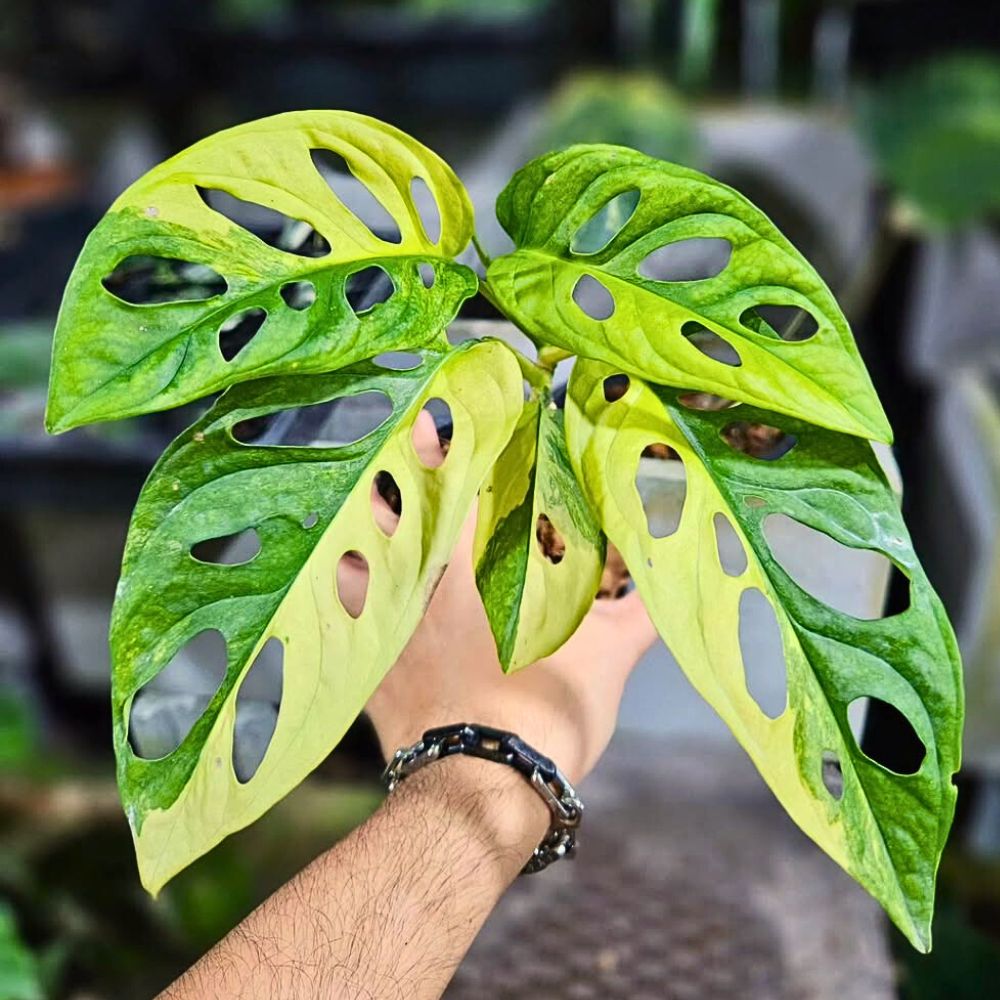
For rare varieties like the Monstera adansonii Albo or Aurea, propagation often requires extra care and attention. Their variegation is unstable, meaning cuttings may revert to the plant’s all-green growth if the node lacks variegated tissue. Therefore, always propagate them from stems with visible color streaks in the nodes to preserve the mutation. This will help maintain the variegated pattern
Growing Monstera Adansonii Indoors
Successfully growing Monstera adansonii indoors hinges on mimicking its rainforest habitat. There are several requirements and essentials that one has to have in mind when seeking to grow this exotic beauty.
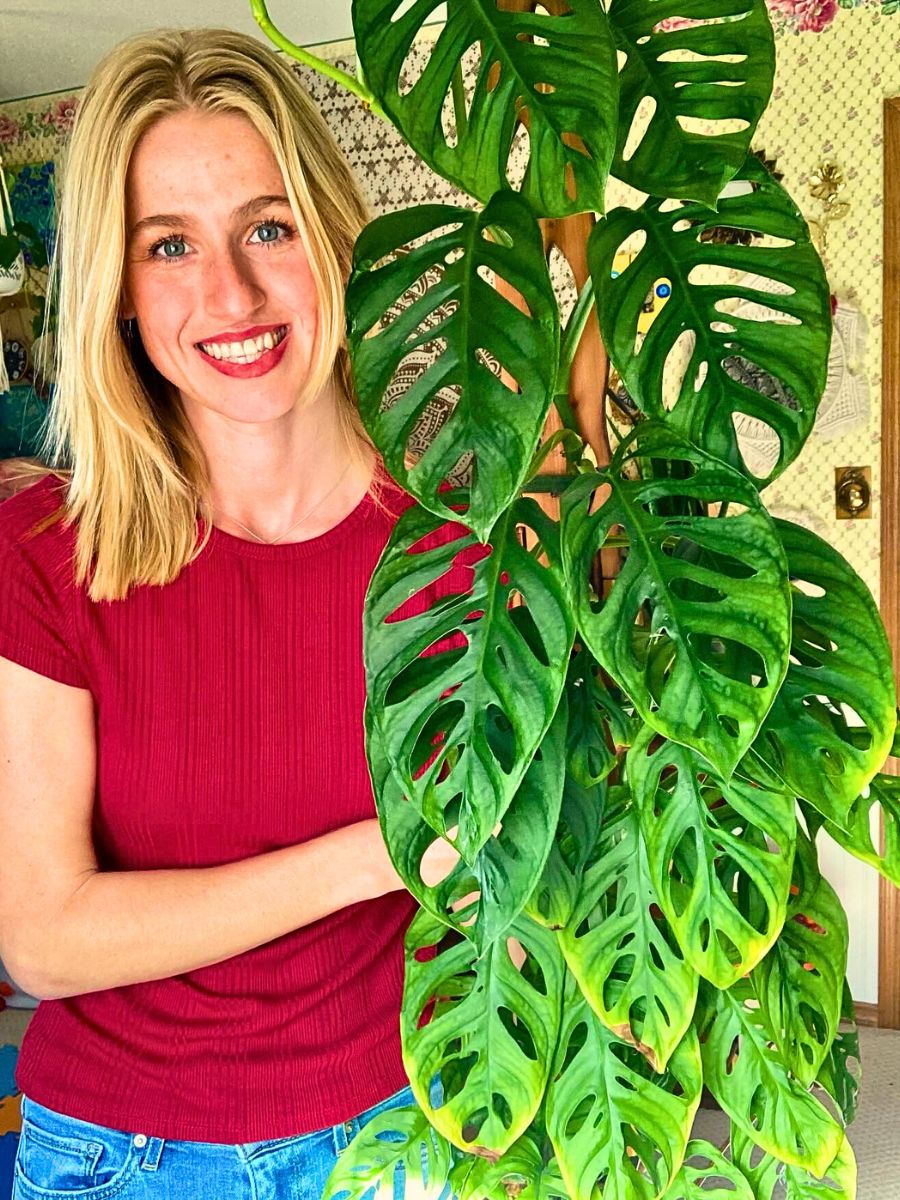
Light Requirements
Monstera adansonii prefers bright, indirect light, such as that provided by east or north-facing windows. Direct sunlight scorches its leaves, while low light conditions cause its growth to slow, and the fenestrations to become less pronounced. Supplemental grow lights can help maintain their vibrant growth during darker months. For variegated varieties like the Monstera adansonii Albo, brighter light is a non-negotiable factor to maintain their conspicuous patterns.
Watering and Humidity
The adage ‘less is more’ applies to this houseplant. Overwatering is the quickest way to harm the Monstera adansonii. Ideally, watering should be thorough but infrequent, allowing the top inch of soil to dry between the sessions, and then soaking it systematically until water drains from the pot’s base. In winter, reduce the watering frequency to match slower growth. Also note that overwatering the plant leads to root rot, a common issue in poorly draining soils. A mix of peat moss, perlite, and orchid bark is suitable in this case as it ensures adequate drainage and aeration.
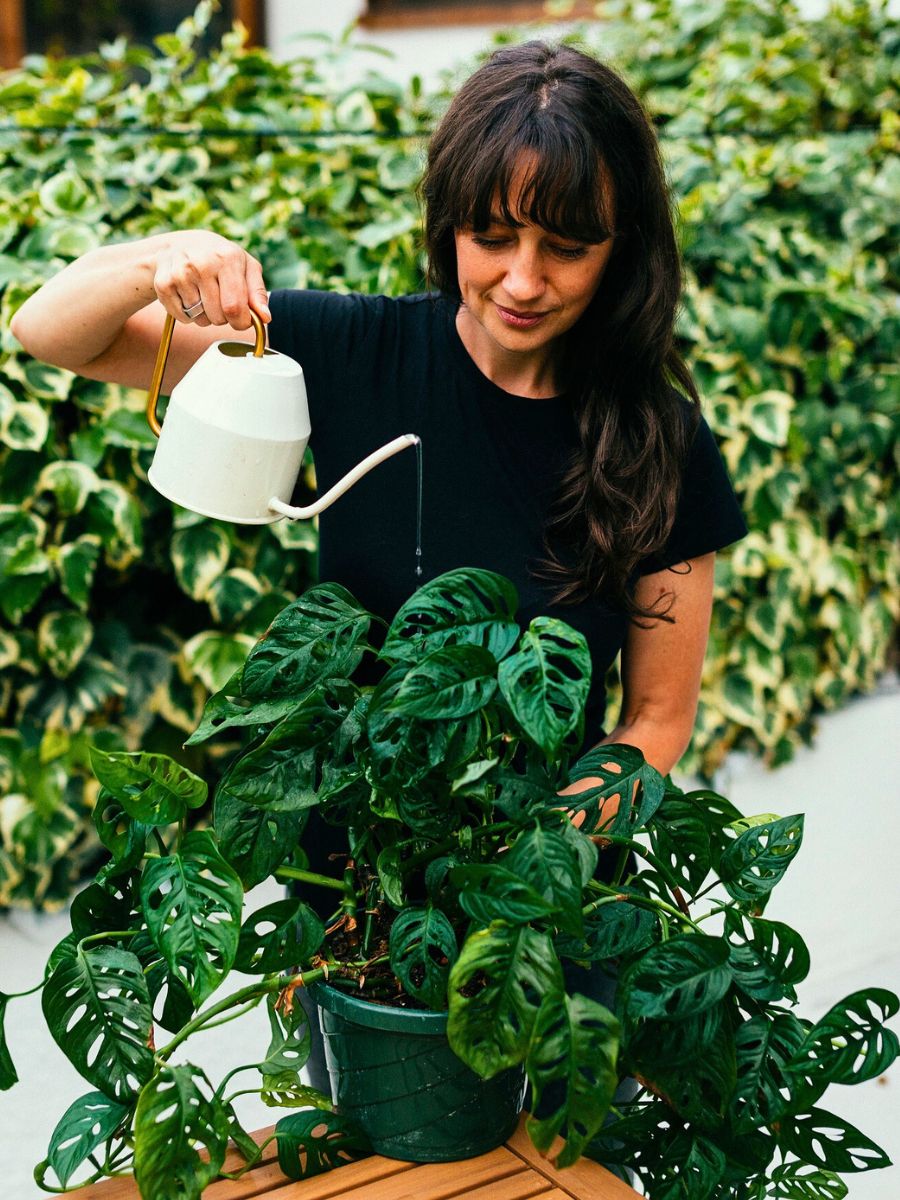
Soil and Fertilization
A well-draining, slightly acidic soil (pH 5.5–7.0) supports healthy root development of the plant. An aerated mix is perfect in this case, combining peat moss, perlite, and orchid bark for a chunky blend that, as noted earlier, prevents root rot. Terracotta pots, which wick away excess moisture, are an excellent choice for use. Also, monthly fertilization with a balanced, water-soluble formula (diluted to half strength) during spring and summer promotes the plant’s vigorous growth. But be sure to reduce feeding in winter when the Monstera adansonii’s growth slows down.
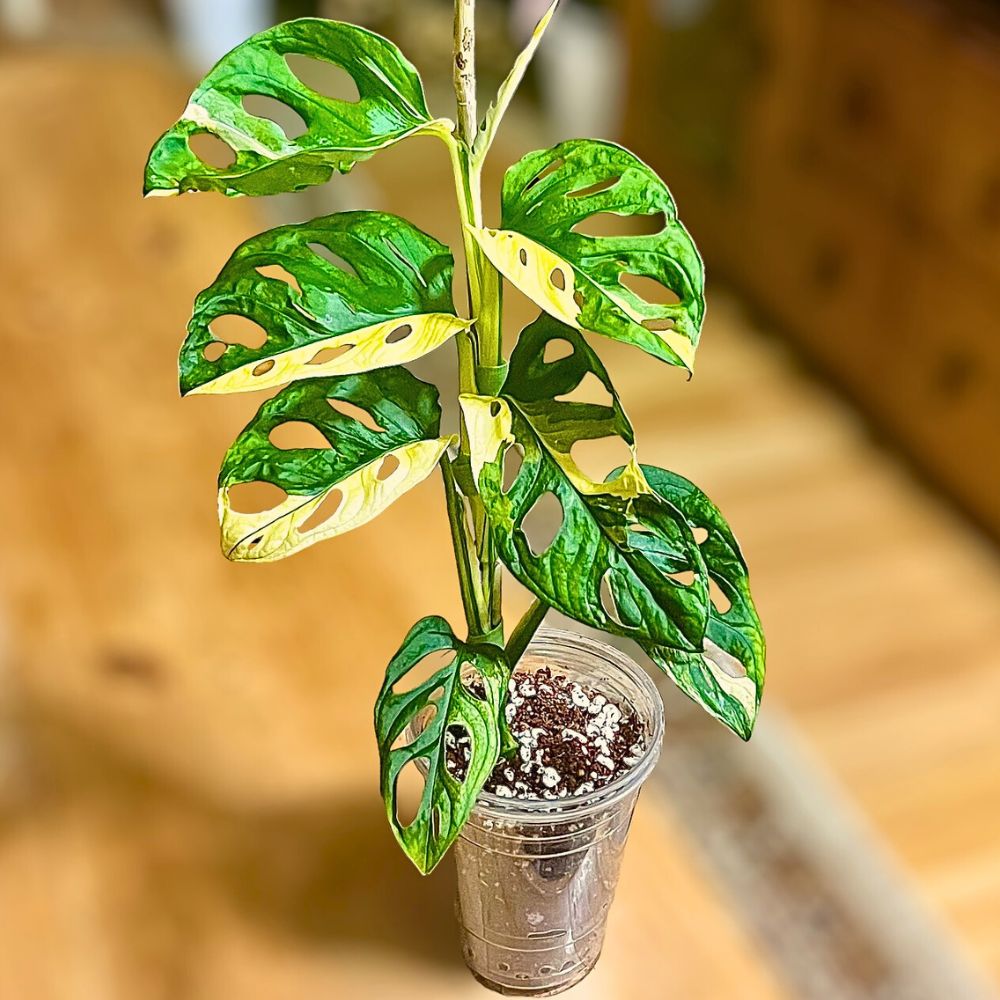
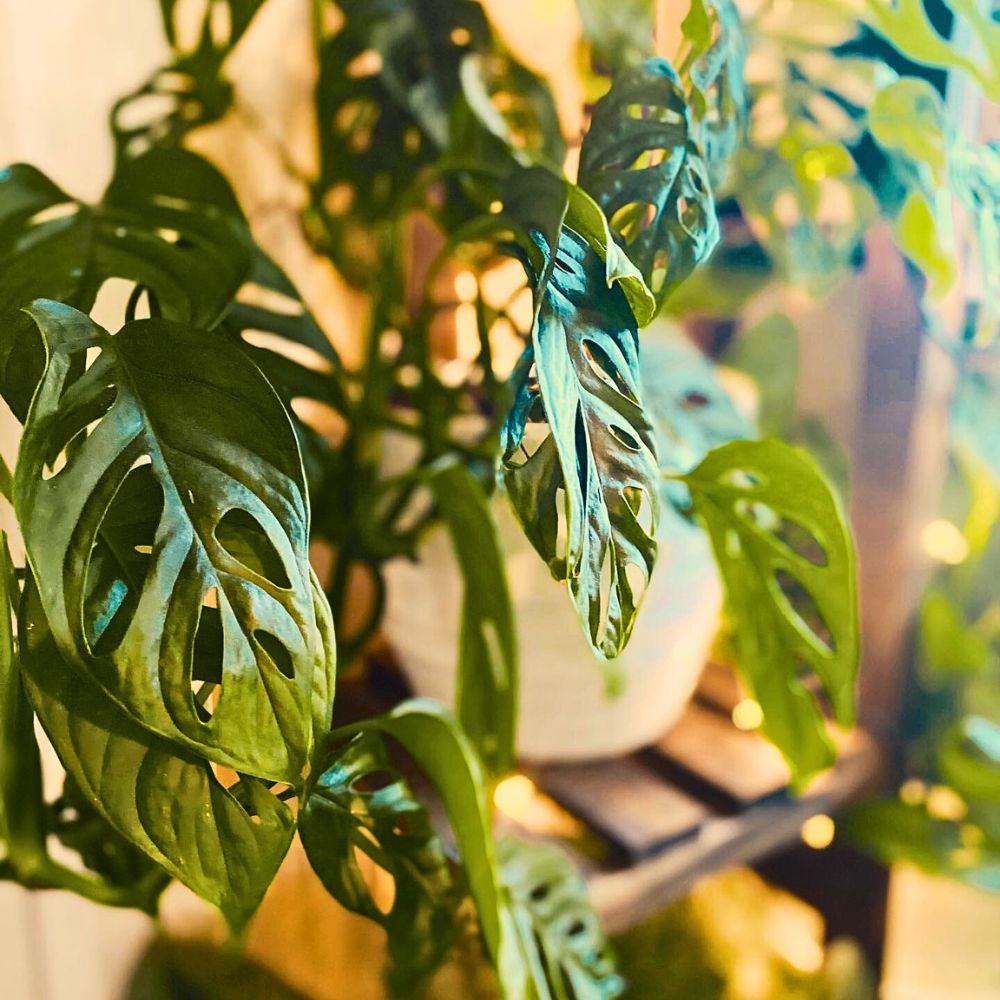
Humidity and Temperature
Always aim for 60–80% humidity. While the adansonii Monstera can adapt to average household humidity, it thrives well with extra moisture. Grouping plants, using a pebble tray, or running a humidifier can help in this case as they help replicate tropical conditions. Temperatures of between 18–29°C are ideal for this houseplant, avoiding drafts and sudden temperature drops below 15°C.
Support Structures
To encourage vertical growth of the Swiss Cheese plant (the adansonii Monstera), provide it with a moss pole or trellis which create conditions that mimic and cater to the plant’s natural climbing habit. This results in larger leaves and pronounced fenestrations.
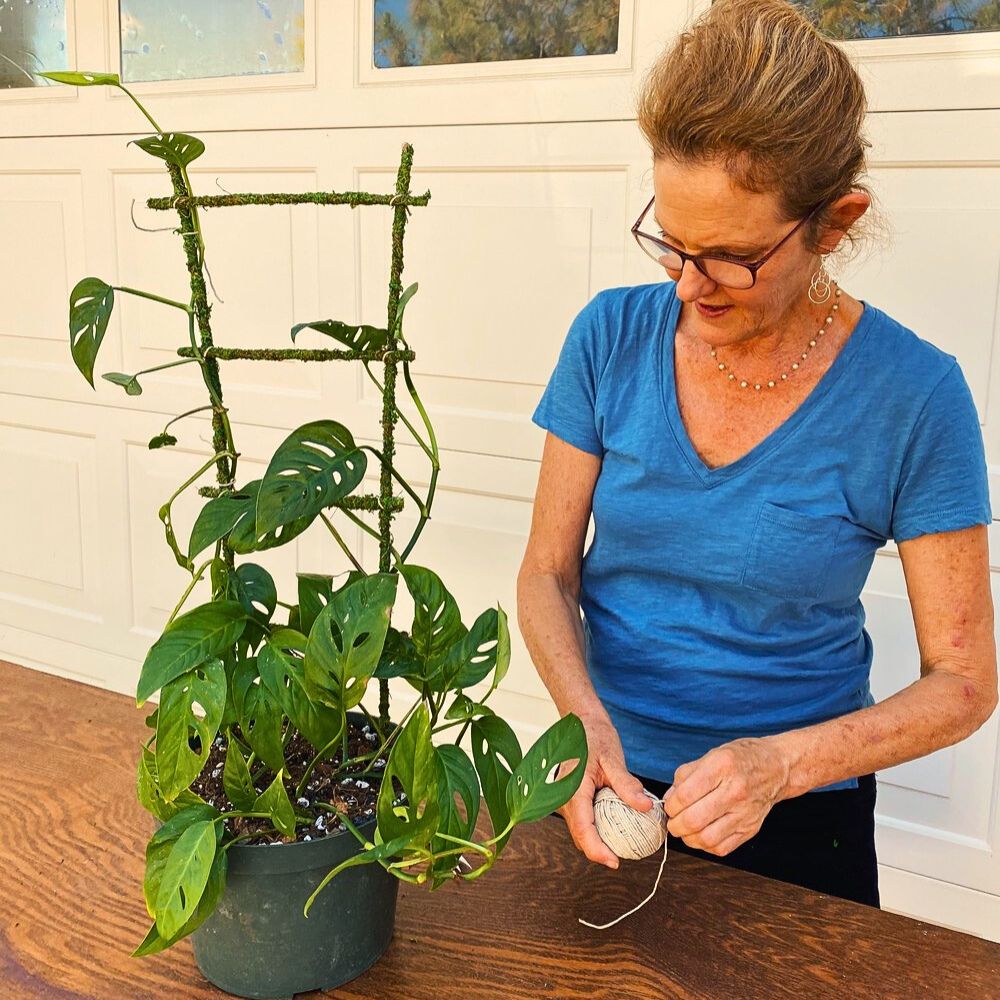
Monstera Adansonii’s Usefulness in Your Spaces
The Monstera adansonii’s resourcefulness shines in its ability to adapt to diverse spaces. In indoor spaces, the plant’s air-purifying qualities, coupled with relatively low maintenance, make it ideal for homes and workspaces. In homes, it adds a touch of the tropics to shelves, mantels, or hanging planters. Its trailing vines, on their part, create vertical interest, which makes it ideal for small spaces where floor plants are not practical. You could, also, pair it with macramé hangers for a bohemian vibe or sleek ceramic pots for modern minimalism.
In offices, this plant does more than beautify—it enhances well-being, as studies show that greenery in workspaces reduces stress, boosts creativity, and improves air quality. The adansonii Monstera is particularly effective at filtering airborne toxins like formaldehyde, commonly found in office furniture and carpets. You can, therefore, place it near desks or in communal areas to create a calming, productive environment.
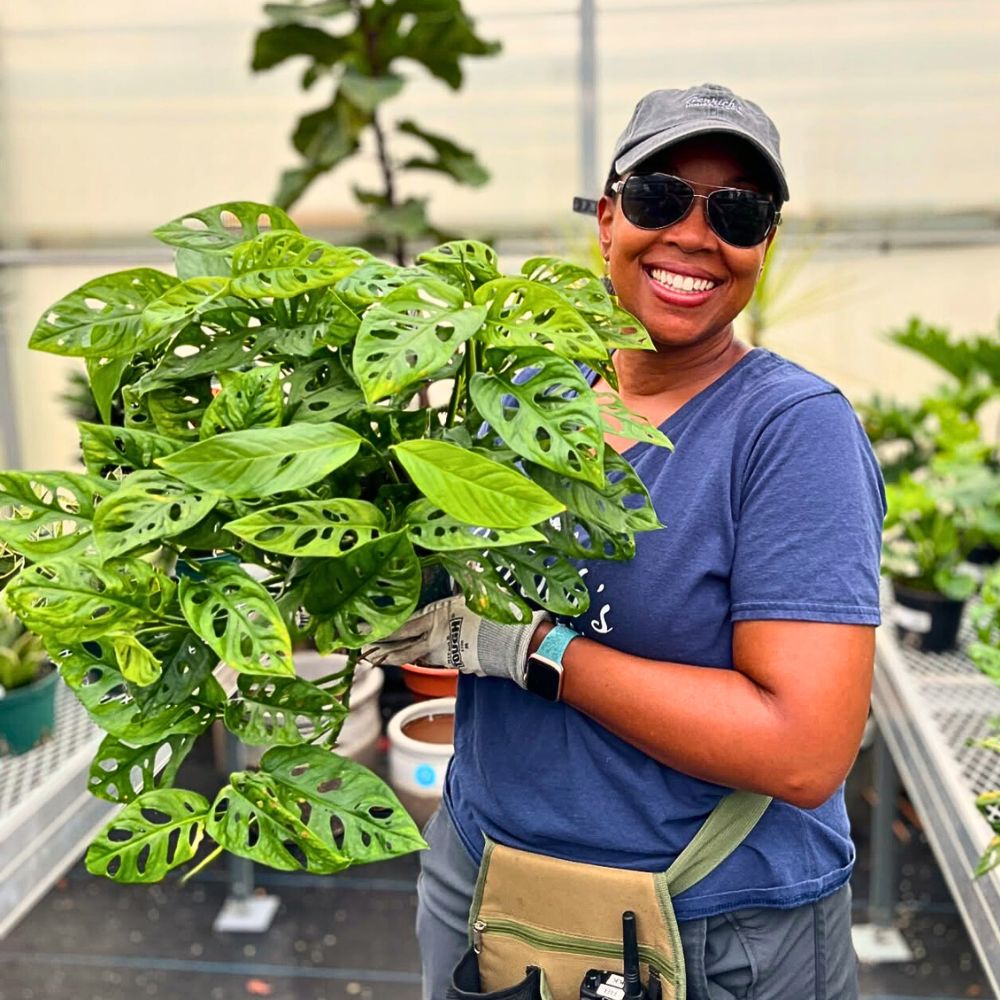
Though perfect for indoor spaces, you could also grow it in outdoor settings. For outdoor growing (in USDA zones 10–12), the Monstera adansonii thrives in shaded patios or under-tree canopies. Its climbing habit, likewise, makes it a natural choice for green walls or pergolas. In all these spaces, the Swiss Cheese plant's care is essential. It should be protected from direct sun (and frost when outdoors), as well as common conditions like yellowing leaves, leggy growth, and pests such as spider mites and mealybugs. You can treat the pests that could harm the plant using neem oil or insecticidal soap. And, essentially, all else that is required to replicate the Monstera adansonii’s native rainforest habitat conditions which guarantees that you will have a beautiful Swiss Cheese plant growing inside your home or on your patio.
Feature image by @genrichs_garden_center, header image by @slavetomygreens.

